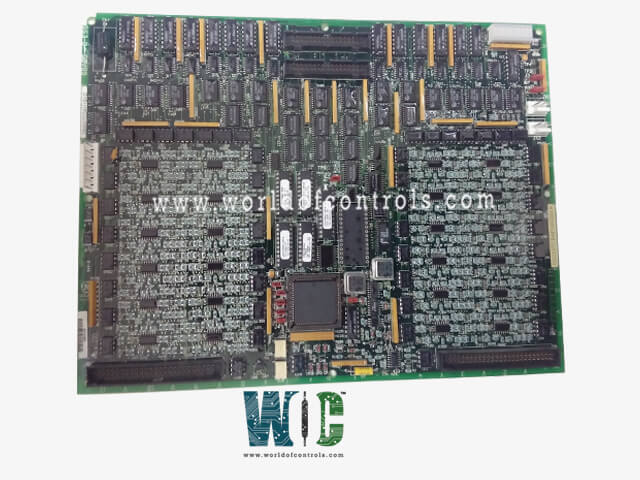
World Of Controls understands the criticality of your requirement and works towards reducing the lead time as much as possible.
DS200TCDAH1BJE - Digital I/O Board is available in stock which ships the same day.
DS200TCDAH1BJE - Digital I/O Board comes in UNUSED as well as REBUILT condition.
To avail our best deals for DS200TCDAH1BJE - Digital I/O Board, contact us and we will get back to you within 24 hours.
Part No.: DS200TCDAH1BJE
Manufacturer: General Electric
Country of Manufacture: United States of America (USA)
Product Type: Digital I/O Board
Availability: In Stock
Series: Mark V
DS200TCDAH1BJE is a Digital I/O Board developed by GE. It is a part of the Mark V control system. The Digital IO Board process both digital contact input signals and contact output signals (such as relay or solenoid controls), enabling smooth communication between different terminal boards and control modules.
The board is designed to carry contact input signals from the DTBA and DTBB terminal boards. These signals are transmitted via JR and JQ connectors, which connect to the corresponding sockets on the DTBA and DTBB boards, respectively. Once the input signals are received, the board performs several critical functions:
The board also handles contact output signals that control relays, solenoids, or other digital actuators. These signals are generated by the board and carried to the TCRA boards via JO1 and JO2 connectors. These outputs are essential for controlling various devices in the system, enabling actions such as activating relays, solenoids, or other components that are part of the automation process.
The WOC team is always available to help you with your Mark V requirements. For more information, please contact WOC.
What is DS200TCDAH1BJE?
It is a Digital I/O Board developed by GE under the Mark V series.
How does the TCDA board handle input signals?
The TCDA receives contact input signals from the DTBA and DTBB terminal boards through the JQ and JR connectors. It conditions these signals, time-tags any state changes, and transmits the processed signals to the IONET via the JX1 or JX2 connectors.
What is the role of the output circuits on the TCDA board?
The board controls output signals (relay/solenoid) via the JO1 and JO2 connectors. These connectors send the output signals to the TCRA boards, which then trigger relays, solenoids, or other actuators in the system.
How does the board communicate with other system components?
The board communicates with other components over the IONET. It transmits processed input signals to control modules and terminal boards such as the TCQC board (located in R1 and R2 if Q21 is installed) and the CTBA terminal board (in R5).